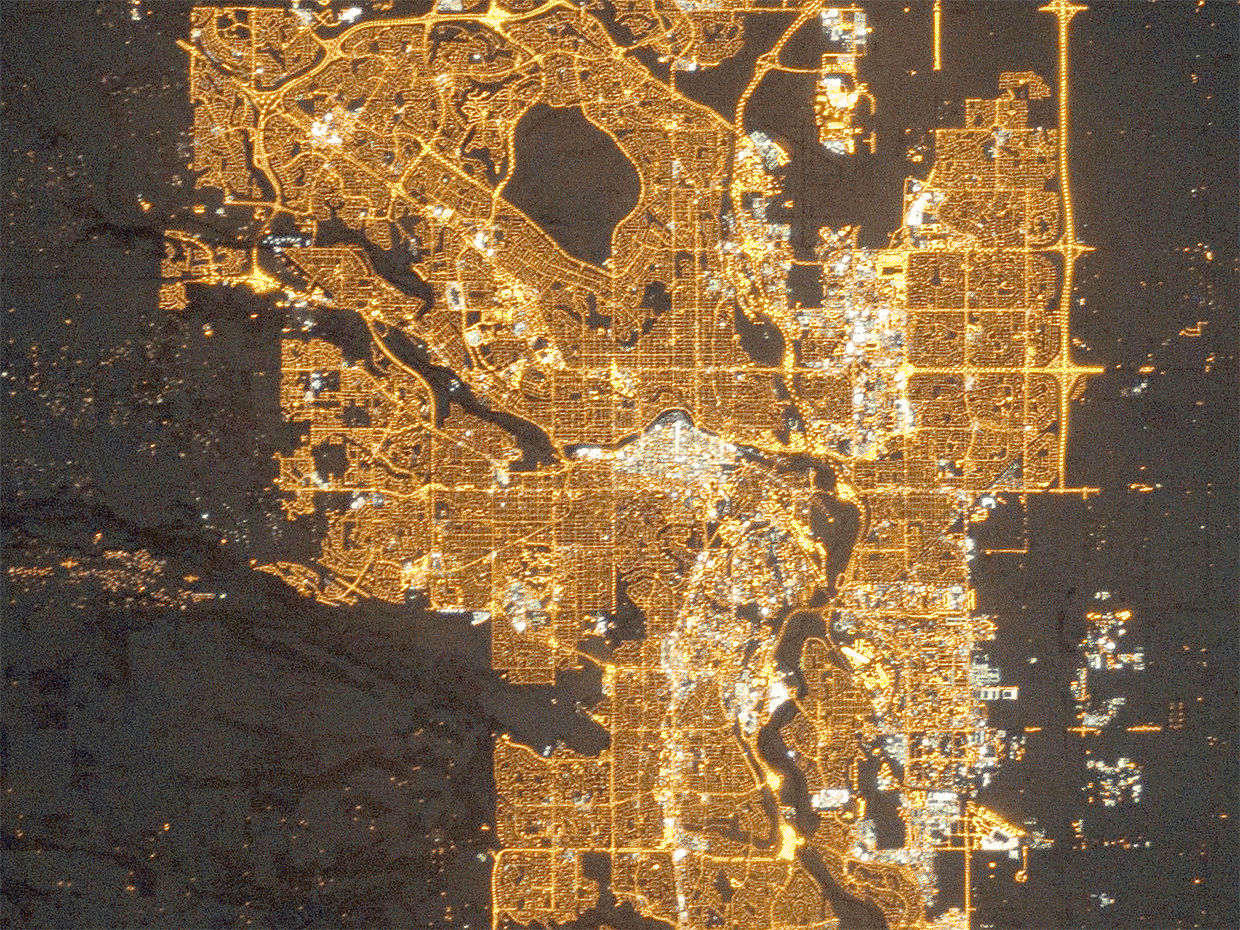Around the world, more lights keep being switched on. A new analysis of satellite data from the past four years shows that the total acreage lit by artificial light at night increased by an average of 2.2 percent a year. The brightness of the areas lit at the start of the study also increased by the same rate—2.2 percent annually—around the globe.
That growth is disappointing, says Christopher Kyba of the GFZ German Research Center for Geoscience in Potsdam. A member of the International Dark-Sky Association, he had hoped that efforts to switch outdoor lighting from sodium lamps to efficient LEDs would reverse the loss of the night.
Instead, he says, "the use of artificial lighting is increasing and we're losing more and more of the night on a planetary scale."
Light pollution was an issue even before LEDs, and it wasn't just astronomers who complained. City-dwellers were annoyed by the glare from bright lights shining in their windows. Naturalists found that artificial lights were affecting animals including insects, bats, and sea turtles. In 2012, the European Union launched the Loss of the Night Network to monitor environmental effects of outdoor lighting.
The improvements in energy efficiency brought by LED street lights are clear. But the extent of artificial lighting at night has been hard to monitor. Photos from military weather satellite photos showed the global extent of artificial lighting, but the cameras were not calibrated to measure brightness and were prone to changes in sensitivity.
That changed after the October 2011 launch of a NOAA satellite carrying the Visible Infrared Imaging Radiometer Suite—a set of instruments that includes a sensor calibrated to measure nighttime radiance at wavelengths from 500 to 900 nanometers. That sensor's main purpose is to gather data for short-term weather forecasts and to monitor disaster zones. But analysis of that well-calibrated data also can measure changes in the brightness and extent of artificial lighting at night.

Using data collected from 2012 to 2016, Kyba's group found that night-time lighting increased in brightness and area across most of Africa, Asia, and South America. Levels remained stable in some countries that already were bright, such as the United States and the Netherlands, they report in Science Advances.
Yet the satellite data understates the actual increase because its sensor cannot detect blue light, which is at the center of an ongoing controversy over the environmental impact of LED street lights.
LED street lamps are built around bright blue LEDs, which excite yellow phosphors to produce a blend of colors that looks white to the eye. LED lamps can be designed to block blue, but highway engineers prefer blue-rich LEDs because human night vision is more sensitive in that range. Up to half of an LED lamp's output can fall in the blue region missed by the sensor.
Because the sensor misses blue light, Kyba says it recorded a decrease in light from Milan and other cities which switched from old sodium lamps to LEDs during the measurements. Pinning down the real change in brightness will require a different sensor that is sensitive across the visible spectrum and calibrated to match human vision.
Thus, although LED lighting has saved energy, people have been turning on more lights rather than pocketing their savings. It's called the rebound effect, and it's been going on for centuries, write Kyba and his colleagues: "Regardless of historical or geographical context, humans tend to use as much artificial light as they can buy for about 0.7 percent of [gross domestic product]."
Jeff Hecht writes about lasers, optics, fiber optics, electronics, and communications. Trained in engineering and a life senior member of IEEE, he enjoys figuring out how laser, optical, and electronic systems work and explaining their applications and challenges. At the moment, he’s exploring the challenges of integrating lidars, cameras, and other sensing systems with artificial intelligence in self-driving cars. He has chronicled the histories of laser weapons and fiber-optic communications and written tutorial books on lasers and fiber optics.



